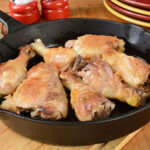
Heredity describes how traits are passed from a hen and rooster to their offspring. These traits are encoded in genes, which in turn are found on chromosomes. Since only the end results — but not the genes and chromosomes themselves — are clearly visible, the mechanics of how heredity works can sometimes seem rather vague. […]
Continue Reading








